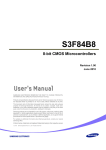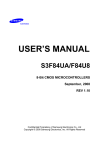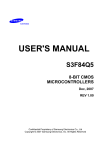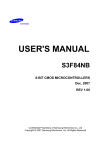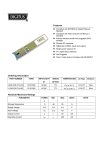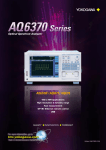Download Product User Guide (PUG) for the XCO2 SCIAMACHY Data Product
Transcript
ESA Climate Change Initiative (CCI) Product User Guide (PUG) for the XCO2 SCIAMACHY Data Product BESD Page 1 Version1 25 Feb. 2013 for the Essential Climate Variable (ECV) Greenhouse Gases (GHG) ESA Climate Change Initiative (CCI) Product User Guide (PUG) for the XCO2 SCIAMACHY Data Product BESD for the Essential Climate Variable (ECV) Greenhouse Gases (GHG) Written by: GHG-CCI project team Lead author: Maximilian Reuter, Institute of Environmental Physics, University of Bremen ESA Climate Change Initiative (CCI) Page 2 Product User Guide (PUG) for the XCO2 SCIAMACHY Data Product BESD Version1 25 Feb. 2013 for the Essential Climate Variable (ECV) Greenhouse Gases (GHG) Change log: Version Nr. Date Status Version 1, draft 1 5 October 2012 Template version for input by project partners Reason for change Author: O.Hasekamp Version 1, draft 2 25 February 2013 Make one PUG per product, data examples in first section Drafting of the PUG for BESD XCO2 ESA Climate Change Initiative (CCI) Product User Guide (PUG) for the XCO2 SCIAMACHY Data Product BESD Page 3 Version1 25 Feb. 2013 for the Essential Climate Variable (ECV) Greenhouse Gases (GHG) Table of Contents 1 Summary ....................................................................................................................... 4 2 Introduction .................................................................................................................... 6 3 4 2.1 The SCIAMACHY Instrument .................................................................................. 6 2.2 The BESD XCO2 Full Physics Product .................................................................... 6 Product Description........................................................................................................ 8 3.1 Product Content and Format ................................................................................... 8 3.2 Quality Flags and Metadata .................................................................................... 8 3.3 Bias Correction ....................................................................................................... 8 3.4 Data Usage ............................................................................................................. 8 3.5 Tools for Reading the Data ..................................................................................... 9 3.6 Known Limitations and Issues ................................................................................. 9 3.7 Data file content ...................................................................................................... 9 References and Further Reading ................................................................................. 10 ESA Climate Change Initiative (CCI) Product User Guide (PUG) for the XCO2 SCIAMACHY Data Product BESD Page 4 Version1 25 Feb. 2013 for the Essential Climate Variable (ECV) Greenhouse Gases (GHG) 1 Summary This document is the Product User Guide (PUG), which is a deliverable of the ESA project GHG-CCI. The GHG-CCI project started on 1st September 2010. The GHG-CCI project is one of several projects of ESA’s Climate Change Initiative (CCI). The GHG-CCI project will deliver the Essential Climate Variable (ECV) Greenhouse Gases (GHG). State-of-the-art retrieval algorithms for remote sensing of the ECV “Greenhouse Gases” (GHGs) will be developed further in the frame of this project. Multi-year Carbon Dioxide (CO2) and Methane (CH4) data sets will be generated and validated. Two existing satellite sensors will be used to produce the core GHG-ECV products (XCO2 and XCH4): SCIAMACHY on ENVISAT and TANSO on GOSAT. Both instruments measure NIR/SWIR spectra of reflected solar radiation and are sensitive to CO2 and CH4 concentration changes close to the Earth’s surface. Consequently they carry information on regional surface fluxes. The accuracy requirements for such an application are demanding, especially for CO2 but also for CH4. A two-year, round-robin exercise has been conducted for eight different CO2 and CH4 retrieval algorithms, as developed for SCIAMACHY and GOSAT. During the round-robin phase of the projects the performance of algorithms has been compared and validated with independent ground based measurements and algorithms have been select to provide input to the Climate Research Data Package (CRDP). For some products it was not possible to select one algorithm because different algorithms compared equally well with the validation measurements but showed significant differences at a global scale. An overview of the selected algorithms is provided in Table 1. This document describes the BESD XCO2 data products so that it will be clear for the user how to use the products. The description includes quality flags and metadata, data format, product grid and geographical projection, known limitations, available tools for decoding and interpreting the data, and the product (column) averaging kernels and a description how to use them. Product Competing Selected Algorithms Algorithms XCO2 SCIA WFMD (Weighting Function Modified DOAS, IUP-Bremen) BESD BESD (BESD Bremen optimal EStimation Doas, IUP-Bremen) XCO2 GOSAT OCFP (OCO Full Physics, UoL) OCFP & SRFP SRFP (SRON Full Physics, SRON)* XCO2 merged („EMMA“) N/A Ensemble algorithm/product -> Add to GHG-CCI portfolio ESA Climate Change Initiative (CCI) Product User Guide (PUG) for the XCO2 SCIAMACHY Data Product BESD Page 5 Version1 25 Feb. 2013 for the Essential Climate Variable (ECV) Greenhouse Gases (GHG) XCH4 SCIA WFMD WFMD & IMAP IMAP (Iterative Maximum A Posteriori method, SRON / JPL) XCH4 GOSAT OCFP +OCPR (OCO-Proxy, UoL) SRFP & OCPR SRFP + SRPR (SRON-Proxy, SRON) Table 1: Algorithms evaluated and selected during the round-robin phase of the GH- CCI project. * The SRFP algorithms is commonly known as RemoteC and is being jointly developed by SRON and KIT. ESA Climate Change Initiative (CCI) Product User Guide (PUG) for the XCO2 SCIAMACHY Data Product BESD Page 6 Version1 25 Feb. 2013 for the Essential Climate Variable (ECV) Greenhouse Gases (GHG) 2 Introduction 2.1 The SCIAMACHY Instrument The SCIAMACHY (Scanning Imaging Absorption Spectrometer for Atmospheric CHartographY, /Burrows et al., 1995/, /Bovensmann et al., 1999/) instrument started its operation in 2002 with the launch of the ESA (European Space Agency) satellite ENVISAT (Environmental Satellite) on March 1st, 2002. Roughly one decade later on May 9th, 2012 ESA declared end of the mission due to the unexpected loss of ENVISAT. SCIAMACHY was the first and during seven years the only satellite instruments which was able to measure the CO2 mixing ratio (XCO2) with large sensitivity also in the boundary layer where the signals from the sources and sinks at the surface are largest. ENVISAT was in a sun synchronous descending orbit with an equator crossing time of 10:00. SCIAMACHY measured simultaneously the radiance in 8 spectral channels in the range from 240-2400nm each consisting of 1024 spectral points. BESD uses SCIAMCHY measurements within two spectral bands, namely the O2-A absorption band at around 760nm and the weak CO2 absorption band at around 1580nm. The spectral resolution of these bands was 0.42nm and 1.45nm, respectively. The measurements in these bands had a ground pixel size of approximately 60km across track and 30km along track. The swath width of SCIAMACHY was about 960km. 2.2 The BESD XCO2 Full Physics Product The Bremen Optimal Estimation DOAS (BESD) algorithm is designed to analyze SCIAMACHY sun normalized radiance measurements to retrieve the column-average dry-air mole fraction of atmospheric CO2, i.e., XCO2. BESD is a so called full physics algorithm which uses measurements in the O2-A absorption band to retrieve scattering information of clouds and aerosols. This information is transferred to the CO2 absorption band at 1580 nm by simultaneously fitting the spectra measured in both spectral regions. The explicit consideration of scattering by this approach reduces potential systematic biases due to clouds or aerosols. More details on BESD can be found in the publications of /Reuter et al., 2010/ and /Reuter et al., 2011/. As an example, Figure 2-1 shows a global map of the long term seasonal averages April/May/June (top) short before the growing season with largest values on the northern hemisphere and July/August/September (bottom) during the growing season with lowest values on the southern hemisphere. ESA Climate Change Initiative (CCI) Product User Guide (PUG) for the XCO2 SCIAMACHY Data Product BESD Page 7 Version1 25 Feb. 2013 for the Essential Climate Variable (ECV) Greenhouse Gases (GHG) Figure 2-1: Long term seasonal averages of XCO2 retrieved with BESD. Top: April/May/June. Bottom: July/August/September. ESA Climate Change Initiative (CCI) Product User Guide (PUG) for the XCO2 SCIAMACHY Data Product BESD Page 8 Version1 25 Feb. 2013 for the Essential Climate Variable (ECV) Greenhouse Gases (GHG) 3 Product Description 3.1 Product Content and Format BESD results are stored in one NetCDF file per day. The file names follow the convention CO2_SCI_BESD_vXX.XX.XX_YYYYMMDD.nc where XX.XX.XX stand for a version number and YYYYMMDD stand for year month and day. The files include individual level 2 retrieval results. No averaging has been applied so that each entry corresponds to an individual SCIAMACHY spatial footprint. A table with the full content of the data product is provided in Section 3.7. The product file contains the key product, i.e. the retrieved column averaged dry air mixing ratio XCO2 and information relevant for the use of the data like geo-location, time, vertical layering, averaging kernels, and error estimates. 3.2 Quality Flags and Metadata BESD data are already quality filtered and include only pixels assumed to be reliable so that an additional data filtering by the user is not required. The performed quality filtering relies not on assumptions about realistic XCO2 values. Only XCO2-independent retrieval outputs such as fit residuals, scattering parameters, albedo or instrument related information such as the time of decontamination phases has been used. 3.3 Bias Correction Bias correction is an integral part or the BESD retrieval algorithm, i.e., all XCO2 values within the data files are already bias corrected. BESD’s bias correction relies on a multidimensional non-linear regression realized by an artificial neural network (ANN). In order to give an impression of the magnitude of the bias correction: the bias correction reduces the standard error relative to TCCON validation data from about 2.7ppm to 2.1ppm. 3.4 Data Usage It is recommended to use BESD data as provided within the data files. If the data is to be used within in a surface flux inversion framework or if the data is compared with other XCO2 data for which vertical profile information is available, the column averaging kernels should be used. It should be noted that the values within BESD’s CO2 and averaging kernel profiles correspond to layer averages whereas the layering is defined by the pressure profile giving the level boundaries starting with the surface pressure. This means one could expect to find pressure profiles having one element more than the CO2 profiles. However, this is not the case because the upper most pressure level at the top of the atmosphere is always 0hPa and was omitted, therefore. ESA Climate Change Initiative (CCI) Page 9 Product User Guide (PUG) for the XCO2 SCIAMACHY Data Product BESD Version1 25 Feb. 2013 for the Essential Climate Variable (ECV) Greenhouse Gases (GHG) For all retrieval comparisons, it is recommended to define a common a priori ( ) which is used to adjust the retrieved CO2 ( averaging kernel ( ) and the original a priori ( ( ) using the ): ) ( ) As BESD’s pressure levels are equally spaced, column averages (XCO2) can then be calculated by simply averaging over the layers of the adjusted profiles. 3.5 Tools for Reading the Data The data are stored in Netcdf format which can be read with standard tools in the common programming languages (IDL, Matlab, Python, Fortran90, C++, etc). HDFView (http://www.hdfgroup.org/hdf-java-html/hdfview/) is a great platform independent tool with graphical user interface which can be used to have a first look what is in the data files. 3.6 Known Limitations and Issues Due to instrument issues data earlier than April 2003 are less reliable. 3.7 Data file content Table 3-1: Full Data content of the CO2_SCI_BESD data products (n=number of observations, m=number of pressure levels). Name Type Dimensions Units Description instrument l2_processing_institute String String 1 1 SCIAMACHY IUP l2_processor_version l1b_input_filename solar_zenith_angle String String Float 1 1 n Degrees viewing_zenith_angle Float n Degrees azimuth_difference Float n Degrees Processor Version Number L1B Filename Solar Zenith Angle (0°=zenith) Viewing Zenith Angle(0°=nadir) Azimuth Difference time Double n Seconds longitude_centre Float n Degrees Seconds since 01.01.1970 00:00 UTC Longitude of pixel centre latitude_centre Float n Degrees Latitude of pixel centre longitude_corners Float nx4 Degrees Longitude of pixel corners latitude_corners Float nx4 Degrees Latitude of pixel corners surface_elevation Float n km pressure_levels Float nxm hPa Mean surface elevation of pixel Retrieval pressure levels column_averaging_kernel Float nxm Normalised Column Averaging Kernel Profile ESA Climate Change Initiative (CCI) Product User Guide (PUG) for the XCO2 SCIAMACHY Data Product BESD Page 10 Version1 25 Feb. 2013 for the Essential Climate Variable (ECV) Greenhouse Gases (GHG) chi2 Float n Chi-Square of fit residual rms Float nx3 xco2 Float n ppm RMS of fit residual (total, O2, CO2) Retrieved XCO2 xco2_uncertainty Float n ppm xco2_apriori Float n ppm Uncertainty in retrieved XCO2 A priori XCO2 vmr_profile_co2 Float nxm ppm Retrieved CO2 profile vmr_profile_co2_uncertainty Float nxm ppm vmr_profile_co2_apriori Float nxm ppm Uncertainty in retrieved CO2 profile A priori CO2 profile 4 References and Further Reading /Bovensmann et al., 1999/ Bovensmann, H., J. P. Burrows, M. Buchwitz, J. Frerick, S. Noël, V. V. Rozanov, K. V. Chance, and A. H. P. Goede, SCIAMACHY - Mission objectives and measurement modes, J. Atmos. Sci., 56, (2), 127-150, 1999. /Burrows et al., 1995/ Burrows, J. P., Hölzle, E., Goede, A. P. H., Visser, H., and Fricke, W.: SCIAMACHY – Scanning Imaging Absorption Spectrometer for Atmospheric Chartography, Acta Astronautica, 35, 445–451, 1995. /Reuter et al., 2010/ M. Reuter, M. Buchwitz, O. Schneising, J. Heymann, H. Bovensmann, J. P. Burrows: A method for improved SCIAMACHY CO2 retrieval in the presence of optically thin clouds. Atmospheric Measurement Techniques, 3, 209-232, 2010. /Reuter et al., 2011/ Reuter, M., Bovensmann, H., Buchwitz, M., et al. (2011), Retrieval of atmospheric CO2 with enhanced accuracy and precision from SCIAMACHY: Validation with FTS measurements and comparison with model results, J. Geophys. Res., 116, D04301, doi:10.1029/2010JD015047.










